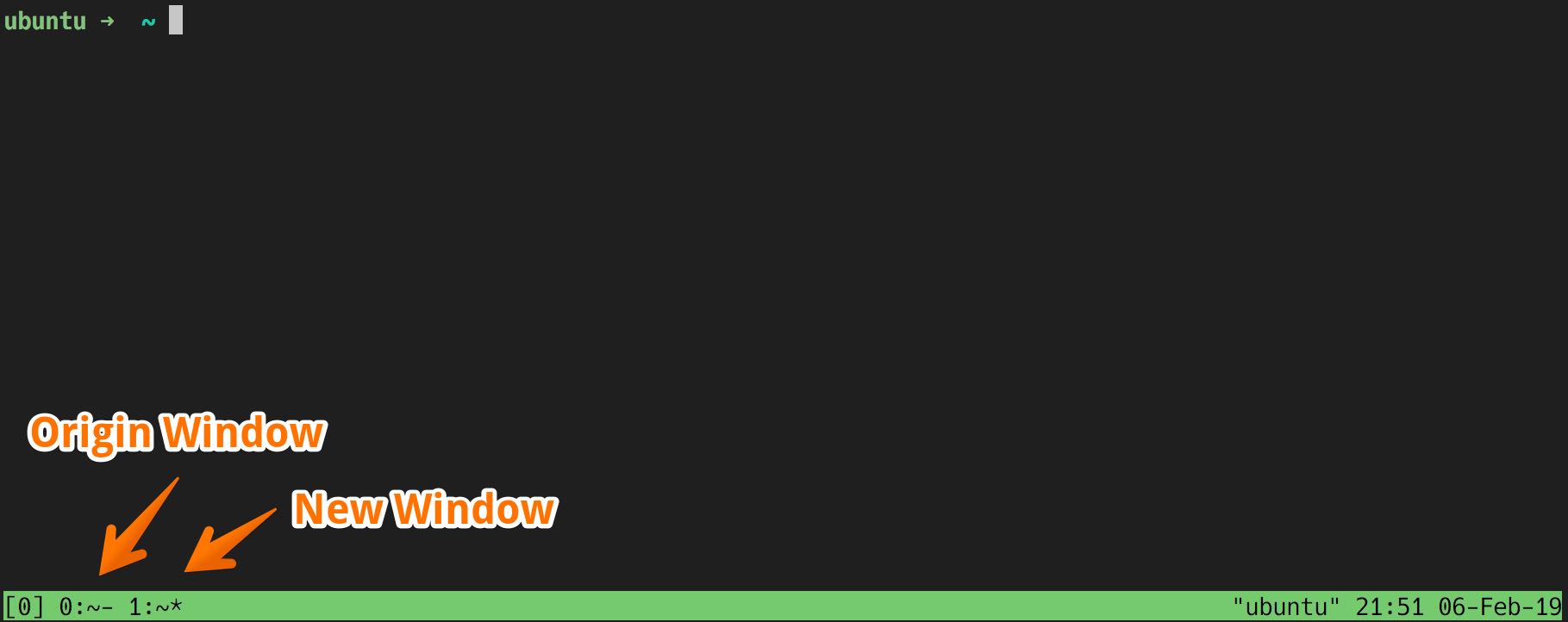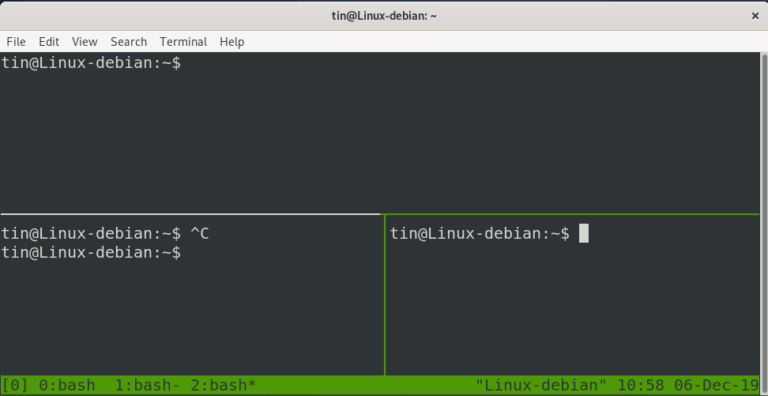


And let's face it, the most important thing a terminal multiplexer gives you is reliable sessions on remote servers. The split-window command has the following syntax: split-window -dhvP -c start-directory -l size -p percentage -t target-pane shell-command -F format (from man tmux, section 'Windows and Panes'). Because if you just set it and forget it, you will be gimped when you find yourself on a foreign server. The most important thing is that your LEARN whatever you choose to shortcut. NOTE: The -h causes it to stack the panes horizontally (with a vertical split) as opposed the default behavior which is the reverse. bind-key choose-window 'join-pane -h -s "%%"'īind-key choose-window 'join-pane -s "%%"'Īlternately, to always join the most recently visited window. bind-key command-prompt -p "create pane from:" "join-pane -s ':%%'"Īlternately, to have an interactive chooser.
#Tmux new window windows
Is the ifconfig output in the tmux history (C-b and page up) Is the terminal you attach to much smaller or bigger than the default 80x24 that tmux 1.4 will use for new unattached windows Also try killing tmux entirely and restarting with export EVENTNOEPOLL1 in the environment. Notice that break-pane is bound to ! and is right next to it and not bound to anything by default. 2 Answers Sorted by: 1 This sounds weird. tmux set-option remain-on-exit on tmux split-window 'ping -c 3 127.0.0.1' The pane will remain open after ping finishes, but be marked 'dead' until you close it manually. You can then break them apart with break-pane which by default is: Ctrl+ B ! If you want to bind it to a shortcut, I suggest NOT overriding a default binding like s, because down the road you will look on the internet for an answer that involves choose-session and it will not work on your system. 13 Just improving Davids answer, because it want very clear for me and I spent some time investigating this. For commands like ping -c that terminate quickly, you can set the remain-on-exit option first. It is ideal for speeding up terminal tasks on your virtual private server (VPS), especially if you are a sysadmin who needs to handle several terminals simultaneously. Therefore, in order to add a pane to the current window and place window 1 into the pane, the command would be ( Ctrl+ B or whatever your bind key is, followed by). tmux is generally used to increase productivity by splitting a terminal window for each new task you have running.

That is to say that specifying the session is optional, but including the : is mandatory. I discovered that the -t and -s switches seem to accept :window and not window. 2 Answers Sorted by: 51 Use: tmux split-window 'shell command' The split-window command has the following syntax: split-window -dhvP -c start-directory -l size -p percentage -t target-pane shell-command -F format (from man tmux, section 'Windows and Panes'). I too was having problems with my attempts to use it based on the tmux documentation. I.e., the Ctrl+ Z suspend key, and the jobs, fg, and bg shell commands.Join-pane is the answer. (Naturally, every command ends with the Enter key.)ġJob control is the arbitration between multiple process groups of a single session that uses the tty as its controlling terminal. To tell tmux to send a newline key to the window. Note that, on the send-keys command, you should actually type the letters Tmux send-keys -t "$pane" C-z 'some -new command' Enter A session is a single collection of pseudo terminals under the management of tmux. A status line at the bottom of the screen shows information on the current session and is used to enter interactive commands. You might script it like this (attach last, because otherwise the script will just wait for you to detach before continuing): session=whatever When tmux is started it creates a new session with a single window and displays it on screen. If you want to clobber whatever is currently running in the pane, you can use respawn-pane -k to kill the existing command and replace it with a new one (e.g., respawn-pane -t sessionname:0.4 -k 'some -new command').īut, if you want to maintain whatever is currently running in the pane, then there may be no better option that simply “typing at it” with send-keys. It is up to that initial command’s process (usually a shell) to supply job control 1 for that terminal. Tmux does not supply a way to add extra processes to a pane once it has been started with its initial command. You’re now running inside tmux, in a newly created session. Non-split windows have a single pane split windows have multiple panes. tmux new -s name This will take over your terminal window, and you’ll see a new command bar at the bottom. Each tmux pane is an interface for a single pty (pseudo tty).


 0 kommentar(er)
0 kommentar(er)
